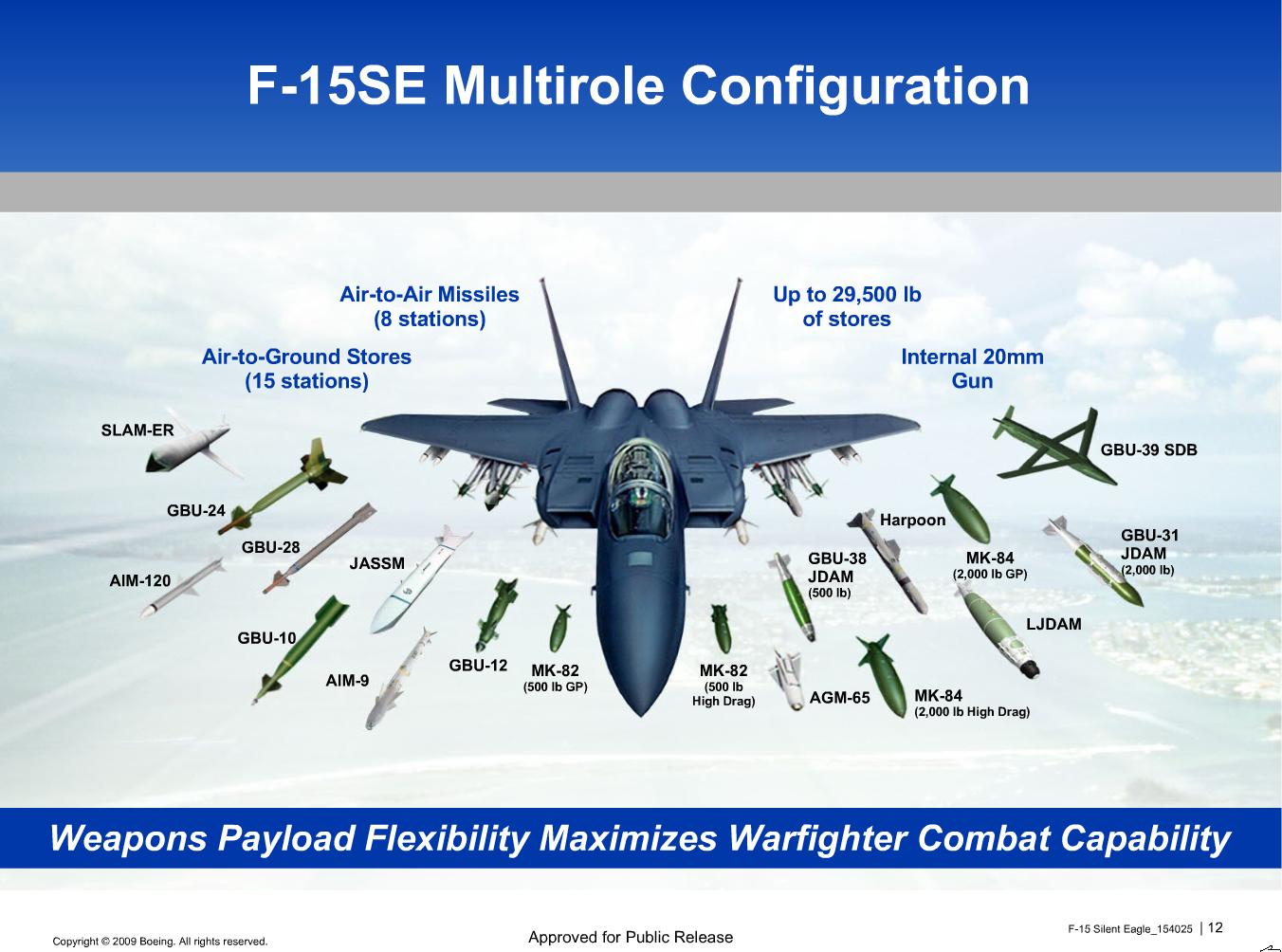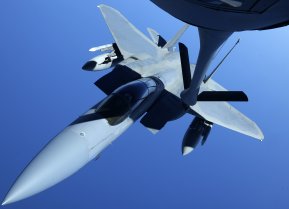F-15SE Silent Eagle: The 'Stealth' F-15 That Never Joined the Air Force
Generally speaking, the F-15 program has been a fantastic success. But one variant failed to 'get off the ground' properly: the F-15SE Silent Eagle.
Meet the F-15SE Silent Eagle: The F-15 Eagle is one of aviation history’s most successful platforms.
With an unblemished record of 100 confirmed kills against zero losses, the F-15 is an undefeated, combat-proven fighter that is still relevant today, nearly five decades after its introduction.
Despite the introduction of the fifth-generation F-22, which was meant to replace the F-15, the fourth-generation aircraft remains integral to the U.S. Air Force’s force structure. With updated avionics, the F-15 is still a capable air superiority fighter.
And the F-15E Strike Eagle, unveiled in 1986, provides the platform with ground-attack abilities. Generally speaking, the F-15 program has been a fantastic success. But one variant failed to properly get off the ground: the F-15SE Silent Eagle.
F-15SE Silent Eagle: An Interesting Idea
First introduced in 2009, the Silent Eagle was a modified Strike Eagle with stealth characteristics. Boeing developed the Silent Eagle especially for the export market, hoping to siphon business away from Lockheed and their stealthy F-35 Lightning II. The F-15SE Silent Eagle was quite similar to the Strike Eagle, but the differences were noteworthy.
For starters, the Silent Eagle featured a conformal weapons bay and fuel tanks, which served to reduce the jet’s radar cross-section, or RCS. The conformal weapons bay also allowed the Silent Eagle to carry four additional air-to-air missiles. The aircraft was qualified to carry a variety of weapons, including “AIM-9 Sidewinder and AIM-120 AMRAAM air-to-air missiles, JDAM satellite-guided bombs, and Small Diameter Bombs, among others,” as Alex Hollings reported in Sandboxx.
Most notably, the Silent Eagle could also carry “Raytheon AGM-88 high-speed anti-radiation missile (HARM) commonly leveraged by Wild Weasel aircraft hunting for enemy radar systems, making the Silent Eagle a viable and even potent option for SEAD (Suppression of Enemy Air Defenses) operations.” To further decrease the jet’s RCS, external missiles and fuel tanks were removed.
The F-15SE Silent Eagle also incorporated a change to the vertical stabilizers. Whereas all preceding F-15s had featured twin vertical stabilizers, standing perfectly parallel to each other, the Silent Eagle’s stabilizers were canted outward at 15 degrees. The change reduced the Silent Eagle’s RCS and provided a bit more lift. The additional lift granted the Silent Eagle a 75-to-100 mile range increase over its predecessor.

In addition to the structural modifications, the Silent Eagle was also coated in radar-absorbent materials, or RAM, to further reduce the jet’s RCS. “RAM is used on modern stealth fighters to minimize the radar return created by the facets of their designs that couldn’t be adjusted to deflect radar waves – things like ramjet inlets, the fighter’s nose, and the leading edges of its wings,” Hollings wrote.
Why Did the F-15SE Fail?
Despite the Silent Eagle’s various RCS-lowering modifications, the F-22 and F-35 are still exceedingly more stealthy airframes – which contributed to the Silent Eagle failing to gain traction on the export market.
South Korea, which had strongly considered purchasing the Silent Eagle at $100 million per aircraft, opted instead to spend $176 million per aircraft on the truly stealthy F-35. Saudi Arabia, on the other hand, who had also considered purchasing the Silent Eagle, opted instead to purchase C, D, and Strike Eagle-variant F-15s.
The examples of South Korea and Saudi Arabia show the failure of the F-15 SE Silent Eagle to establish a niche. Customers typically want to buy something cheap and reliable, or something cutting-edge.
The Silent Eagle fell somewhere in between – an expensive modification of a proven fourth-generation fighter, without true stealth capabilities.
Harrison Kass is a prolific defense and national security writer. An attorney, pilot, guitarist, and minor pro hockey player, he joined the US Air Force as a Pilot Trainee but was medically discharged. Harrison has degrees from Lake Forest College, the University of Oregon, and New York University. He lives in Oregon and listens to Dokken. Follow him on Twitter @harrison_kass.
All Images are Creative Commons/Boeing.


